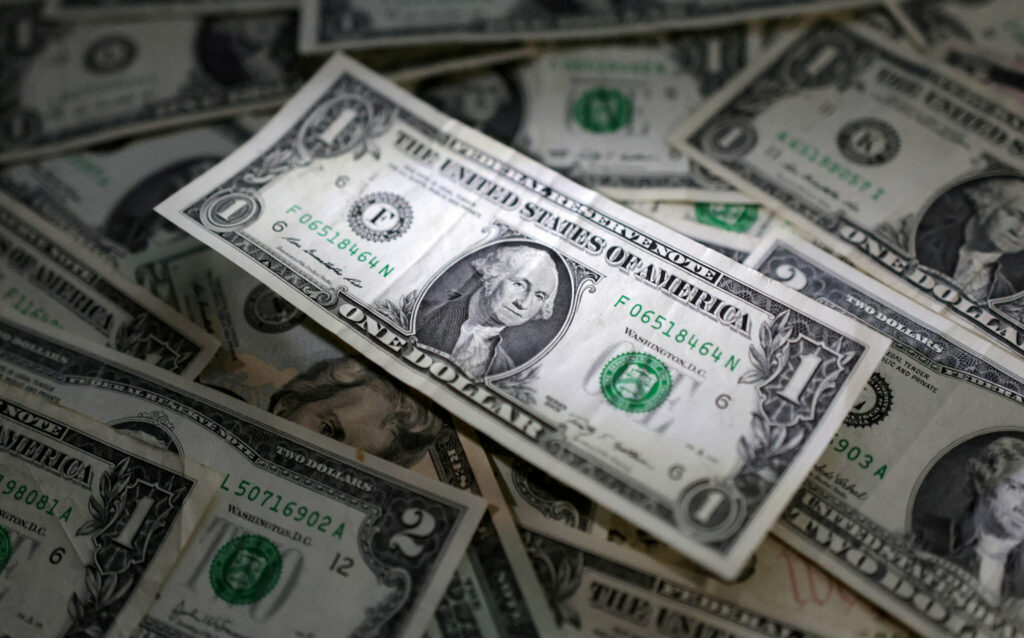On Friday, the dollar slipped against most major currencies as traders took profits following recent gains.
Despite this, the U.S. currency remains well-positioned for further advances, supported by robust U.S. economic data, leading markets to reconsider the likelihood of imminent interest rate cuts.
Recent data showed that new orders for key U.S.-manufactured capital goods rebounded more than expected in April, with shipments also increasing, indicating a rise in business spending on equipment early in the second quarter.
This follows Thursday’s report that U.S. business activity in May accelerated to the highest level in over two years, with manufacturers experiencing surging input prices.
Minutes from the Federal Reserve’s last meeting revealed a lively debate among policymakers about whether current rates were sufficiently restrictive to cool inflation.
On Friday, the dollar was down 0.3% at 104.72 against a basket of currencies, after gaining in five of the last six trading sessions.
For the week, the index rose 0.2%. The euro gained 0.3%, reaching $1.08495 late on Friday.
“Investors are just now taking the opportunity to reflect back on the week and take some profits … it’s really purely a positioning play,” said Boris Kovacevic, global market strategist at Convera in Vienna.
Stronger-than-expected U.S. economic data has delayed the anticipated timing of the first Fed rate cut to September, while expectations for rate cuts by other central banks have also diminished.
“For as much as expectations of easing from the Federal Reserve have cooled off over the last week, it’s a similar story for central bankers around the world – ECB rate cut changes have also downshifted after lots of official commentary since Monday,” said Helen Given, FX trader at Monex USA in Washington.
Despite Friday’s retreat, the near-term outlook for the dollar remains positive, analysts noted. “This theme of the U.S. exceptionalism is still playing out,” Kovacevic said.
The dollar rose nearly 1% this week against the Japanese yen to 156.95 yen, despite Japanese government bond yields reaching decade highs and surpassing 1% at the 10-year tenor.
Japan’s core inflation slowed for a second straight month in April, aligning with market expectations at 2.2%, but remained above the central bank’s target.
“It’s having very little effect on the yen,” said Martin Whetton of Westpac in Sydney.
“The carry of holding dollars is far juicier,” he added.
The pound increased 0.3% to $1.27365 on Friday, as wet weather hit UK consumer spending more than expected in April.
Nevertheless, evidence of persistent inflation and the announcement of a July general election kept sterling near two-month highs.
China conducted a second day of war games around Taiwan, with the yuan steady in the offshore market around 7.2627.
The New Zealand dollar rose 0.4% to $0.61225, bolstered by a hawkish outlook from the Reserve Bank of New Zealand.
Among cryptocurrencies, ether remained flat at $3,735.90 on Friday, following the U.S. Securities and Exchange Commission’s approval of applications from Nasdaq, CBOE, and NYSE to list ETFs tied to the price of ether. For the week, ether is up about 20%.
